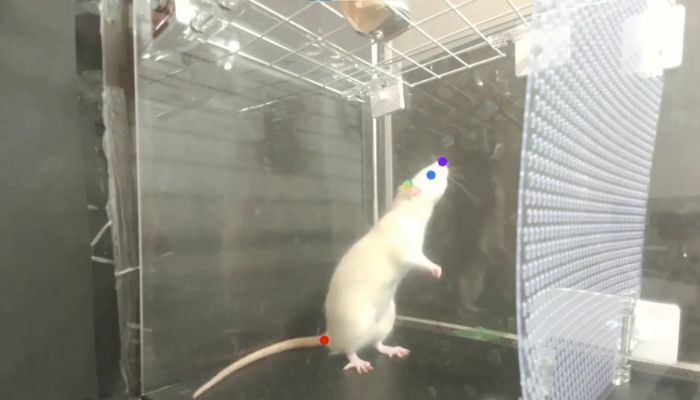[ad_1]
A new study by researchers from the University of Tokyo finds that humans aren’t the only ones banging their heads to musical beats.
Curious scientists played various popular songs by Michael Jackson, Lady Gaga and other singers as well as the Mozart Sonata in four beats to rats and found that they also nodded their heads to the music.
View the rat’s behavior on the camera. The scientists also felt movement via a miniature sensor that was strapped to their heads.
Associate Professor Hirokazu Takahashi was quoted as saying, “The rats that appeared innately, that is, without any training or prior exposure to music, clearly outsynced within 120-140 bpm.” MailOnline.
Humans naturally recognize and respond to the beat of music, a phenomenon known as tempo synchronization, in the same range. The scientists found through a computer model that this rhythm was determined by the brain’s time constant, that is, the speed with which an organ is able to respond to any stimulus.
Takashi added that the experiment demonstrated that the animal brain could be “useful in elucidating the sensory mechanisms of music.”
The first time an animal demonstrated its ability to nod to music was a cockatoo named Snowball bobbing on a Backstreet Boys song. The video went viral in 2009. Neuroscientists and researchers from the Institute of Neurosciences in San Diego studied the bird after the viral video.
They concluded that dancing is not limited to humans.
The new study was published in Science advances It aims to see if mice, which are often used in laboratories, also respond in the same way to music. “Music exerts a powerful attraction to the brain and has profound effects on emotion and cognition,” Takashi explained, adding that the potential of music will be better known if we reveal the “neural mechanism underlying this empirical fact.”
Scientists placed accurate wireless accelerometers on ten experimental mice. These tiny sensors can detect even the slightest of movements. First, one-minute segments from Mozart’s Sonata for Two Pianos in D Major, K. 448 are played in four different tempos.
They also played pop hits like “Beat It” by Michael Jackson, “Sugar” by Maroon 5, and “Another One Bites the Dust” by Queen.
Twenty people who also attached accelerometers also participated in the study. The results showed that both rats and humans responded in the same way. Interestingly, the fast music reduced the level of head shaking in both groups as well.
[ad_2]
Source link

